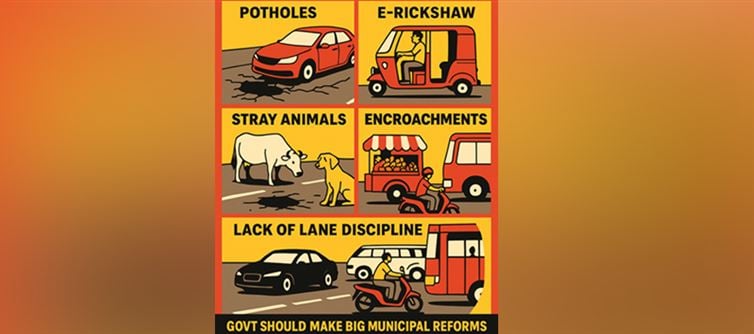
5 Everyday Menaces That Make indian Traffic a Nightmare (And Why Municipal Reforms Can’t Wait)
indian cities are bursting at the seams, and the chaos on the roads says it all. Traffic snarls aren’t just about too many vehicles—they’re the result of systemic failures, weak enforcement, and poor infrastructure. Here are the biggest road hazards every commuter battles daily, and why the government must act fast with serious municipal reforms.
1. Potholes: Death Traps Disguised as Roads
Instead of smooth highways, most indian roads resemble obstacle courses. Potholes not only slow down traffic but also cause accidents, injuries, and in many cases, fatalities.
2. E-Rickshaws: Mobility Without Regulation
E-rickshaws offer cheap last-mile connectivity, but their unregulated growth clogs streets, blocks intersections, and creates unpredictable road behavior—turning convenience into chaos.
3. Stray Animals on Busy Roads
From cows lounging on highways to dogs darting into traffic, stray animals make driving hazardous. Their presence reflects poor urban planning and a lack of animal control policies.
4. Encroachments Eating Up Public Space
Footpaths and road shoulders are swallowed by vendors, illegal structures, and parked vehicles. What should be public space becomes private territory, squeezing traffic into bottlenecks.
5. zero Lane Discipline
In India, lanes are mere suggestions. Bikers weave in between cars, buses stop anywhere, and honking replaces traffic rules. The absence of strict enforcement turns roads into battlegrounds.
The Bigger Picture: Poor Infrastructure Everywhere
Most indian cities simply lack quality public infrastructure. From drainage that collapses in rain to footpaths that don’t exist, the neglect is glaring. Without bold municipal reforms, road safety and traffic flow will only get worse.
🔴 Bottom Line: indian traffic isn’t just a congestion problem—it’s a reflection of broken urban governance. Until governments focus on serious municipal reforms, better infrastructure, and strict enforcement, our cities will remain stuck in permanent gridlock.




 click and follow Indiaherald WhatsApp channel
click and follow Indiaherald WhatsApp channel